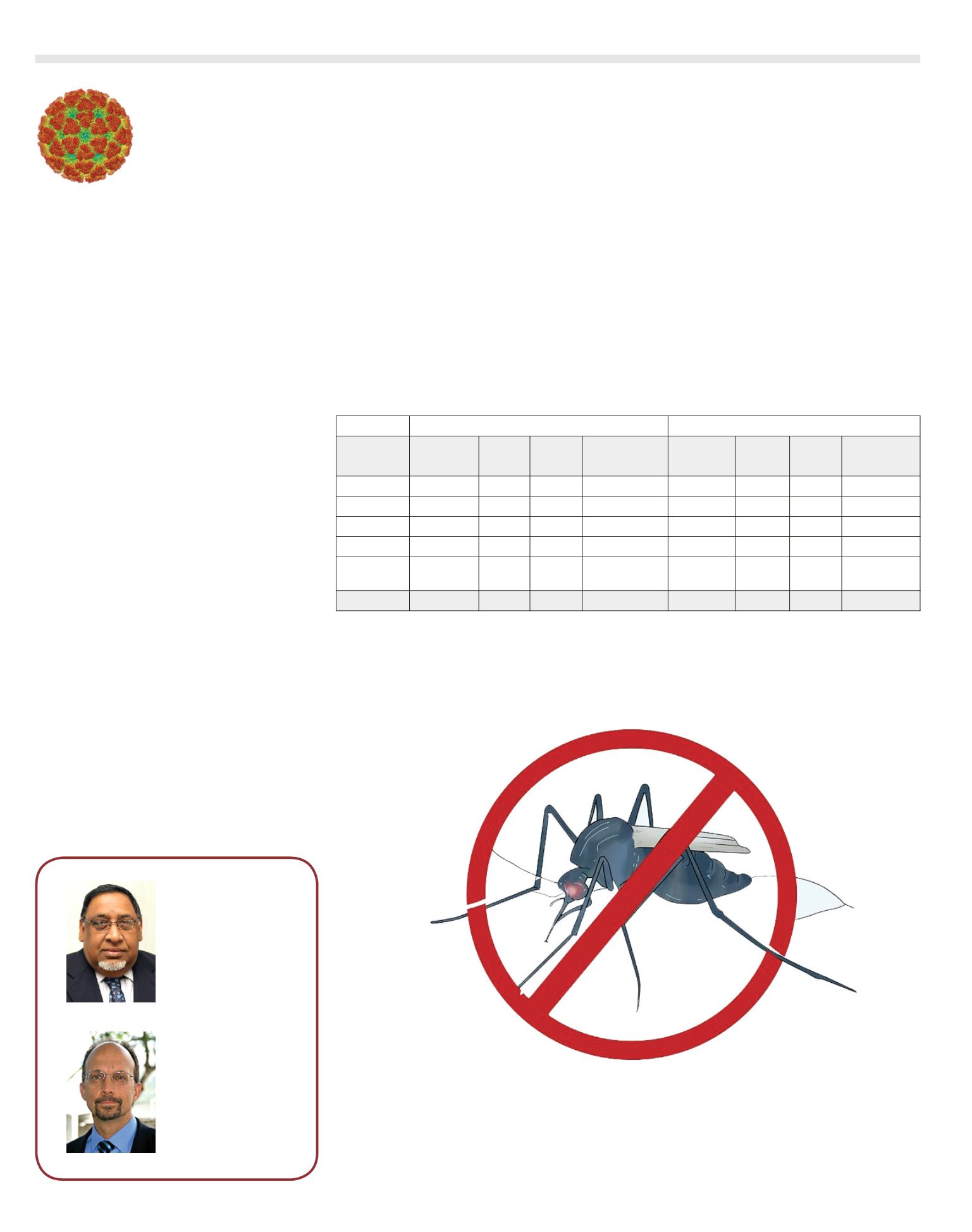
SUNDAY 1ST FEBRUARY, 2015 – UWI TODAY
11
The
Chikungunya
Effect
UWI
TODAY
SPECIAL REPORT
isolated from either side. So why can’t we use this as part
of our control strategy?”
He also said that his studies have revealed thatmosquitoes
do not travel very far, so it would make sense to target
the cardinal points in close proximity to infected spaces,
instead of broad applications.
He even suggested that curtain manufacturers might be
persuaded to treat their fabrics with suitable insecticides
to help act as barriers to mosquitoes entering homes.
It is a novel plan, and one that requires a significant
degree of cooperation from the private sector; but an
“all-inclusive approach” is also what Dr Hospedales is
recommending for the battles ahead.
In the complete revamping of strategies, he suggests that
theremight have to be a return to old techniques such as
window-screens, and deployment of new technologies
such as mobile phones.
“We need more integrated approaches where cellphone
companies get involved, for example,” he says, citing
Sri Lanka where people are encouraged to send text
messages as soon as they feel the onset of symptoms
and they are then advised what to do.
Public education is extremely vital to slowing down the
progress of any virus, he says. If a person understands
that the moment they show signs of the virus, they have
to take extra precautions not to be bitten by mosquitoes
for at least a week (so as not to further spread the virus),
it would help the containment.
The consensus is that there is more research to be
done – which needs far more funding than any of the
Caribbean’s health organisations currently receives – and
there is a need for a complete overhaul of the traditional
strategies.
On March 3 and 4, CARPHA will be part of a consultation
bringing together a range of disciplines to discuss
Chikungunya, epidemic control andvector control. Private
sector organizations and The UWI will be invited as well,
and hopefully, soon, a new approach will take shape.
Dave Chadee
,
Professor of
Environmental
Health, Life Sciences
Department of
The UWI, believes
current vector control
strategies are not
working.
Dr James
Hospedales
,
Executive Director of
the Caribbean Pubic
Health Agency, says
a completely new
approach has to be
taken to epidemic
control.
Females
Males
Room
No.
collected
% Range No (%) of houses
with females
No.
collected
% Range
No (%) of
houses with
males
Bedroom
968 81.9 0-32
159 (31.8)
493
57.4 0-29 130 (26.0)
Living room
101
8.7 0-10
93 (18.6)
201
23.4 0-25
71 (14.2)
Kitchen
71
6.0
0-6
40 (8.0)
93
10.8 0-22
32 (6.4)
Bathroom
22
1.8
0-5
40 (8.0)
55
6.4 0-19
29 (5.8)
Other
rooms
19
1.6 0-12
12 (2.4)
17
2.0 0-13
10 (2.0)
Total
1181 100
858 100
TABLE 1. Adult
Aedes aegypti
collected from different rooms in houses from St Augustine, Trinidad
Aedes aegypti
Circadian Rhythm
12:00 NOON
0.00
MIDNIGHT
Based on investigations of several households, his team was
able to ascertain that
mosquitoes overwhelmingly prefer
to rest in bedrooms (81.9%) and they liked walls best.
It
explains why DDT was effective when it was applied to walls,
and the sprays were not – as they were not as concentrated.
6:00
15:00
10:00–12:00
A typical blood
feeding
18:00–21:00
A typical blood
feeding
6am–9am
Oviposition
Blood feeding
Sugar feeding
Copulating
21:00–05:00
Adult resting
indoors and
outdoors
16:00–18:00
Oviposition
Blood feeding
Sugar feeding
Copulating
12:00–15:00
Adults resting
indoors and
outdoors


